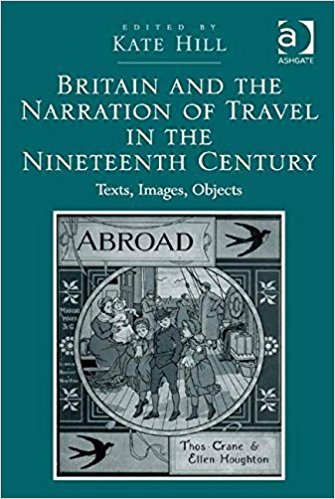Online Publications
"The Pain and Pleasure of Creating Worlds in Ayşegül Savaş’s Walking on the Ceiling” Los Angeles Review of Books. 25 June, 2019.
"Reading Susan Sontag in Paris." Literary Hub. 26 March, 2017.
"Digging Up Nostalgia: Archaeology and Racism in Agatha Christie's Poirot." The Platform. 6 Nov., 2016.
"Top Tips for Informational Interviews." Connected Academics. 6 May, 2016.
Collected Editions and Journals
"Tourism in the Age of Mechanical Reproduction: Aesthetics and Advertisement in Travel Posters and Luggage Labels." Britain and the Narration of Travel in the Nineteenth Century: Texts, Images, Objects. Ed. Kate Hill. Farnham, UK: Ashgate, 2016. 129 - 149.
This chapter, which is taken from the fourth chapter of my dissertation, examines the ephemera of tourism, looking for traces of the picturesque in travel posters and luggage labels circulated to promote touring companies and hotels. A close reading of these images reveals the rich cultural history of tourism, from the global expansion of Thomas Cook & Co. in the mid-nineteenth century to the growing number of women travelling abroad at the turn of the twentieth century.


"The Precise and the Subjective: The Guidebook Industry and Women's Travel Writing in Nineteenth-Century Italy." Women, Travel Writing, and Truth. Ed. Clare Broome Saunders. Oxford, UK: Routledge, 2014. 61 - 76.
While scholars have historically dismissed women's travel writing as overly sentimental, this chapter argues that the personal, subjective nature of women's travel narratives is a direct response to and rebellion against the masculine, authoritative texts of John Murray, Karl Baedeker, and John Ruskin. Travel guides of the nineteenth century attempt to categorize and catalogue the "truth" about any given location. In contrast, Amelia Edwards, Vernon Lee, Edith Wharton, and Lilian Bell each, in their various ways, argue that language is incapable of accurately representing a place or culture, and no text can ever do more than describe the author's own experience.
You can preview this book on GoogleBooks.
"Outing the Garden:Queerness and Queer Space in The Secret Garden." Frances Hodgson Burnett's The Secret Garden: A Children's Classic at 100. Eds. Jackie C. Horne and Joe Sutliff Sanders. Lanham, MD: ChLA and Scarecrow, 2011. (99-118)
I am very proud to be a part of this collection, which the Children's Literature Association recently named first "Honorable Mention" for Best Edited Collection for 2012. This chapter negotiates the interstices of several currents of theory which are relevant to my work, including the effects of travel, queer theory, post-colonial studies, and disability studies. A reviewer for the International Research Society for Children's Literature summarized the chapter, writing, "Lori N. Brister [...] whilst noting the novel's ending returns us to normative conceptions of gender roles, considers how Burnett shows that the traditional gender binaries are not necessarily fixed." This book is available on Amazon, and via other booksellers.
You can preview this book on GoogleBooks.


(Book Review) "Cat on a Hot Tin Roof, by Tennessee Williams, edited by Philip C. Kolin." South Atlantic Review 75.3 (Summer 2010) 145-146.
This is a review of Philip C. Kolin's editorial matter for the Student Edition of Cat on a Hot Tin Roof, published by Methuen Drama (an imprint of Bloomsbury Publishing Group). I was asked to write this review after publishing an article (see below) on Williams's travel writings in a journal edited by Kolin.
"From Europe to the Stage: The Proleptic Travel Articles of Tom Williams." Valley Voices 10.1 (Spring 2010): 89-99.
This article draws textual connections between the well known plays of Tennessee Williams and a series of articles seventeen year old Tom Williams wrote about his travels in Europe in 1928 and subsequently published in his school newspaper. Until recently, the juvenilia had never appeared in print outside of its original publication in paper at University City High School in St. Louis. The parallels drawn here show the maturity of his boyhood writings, and the influence his experience as a young tourist had upon his later works. As mentioned above, Philip C. Kolin was guest editor of this issue Valley Voices celebrating Williams's centennial.
